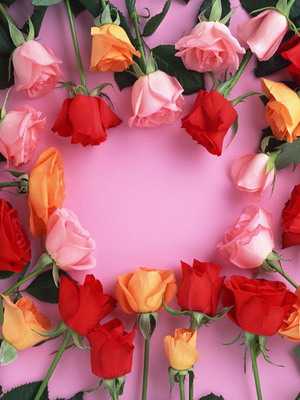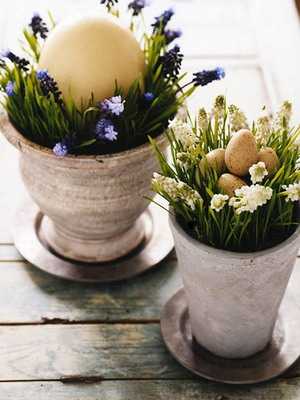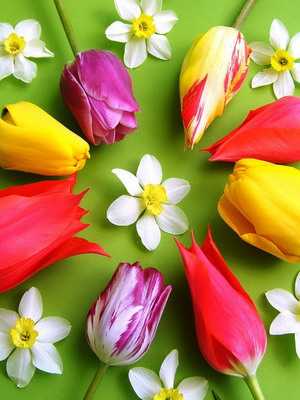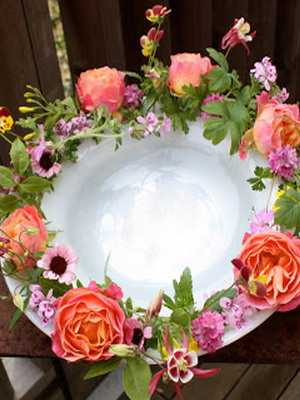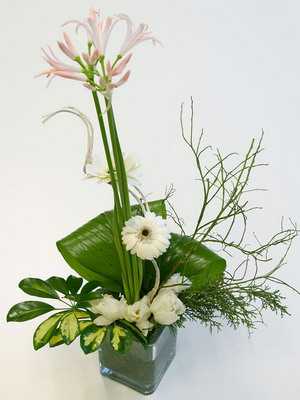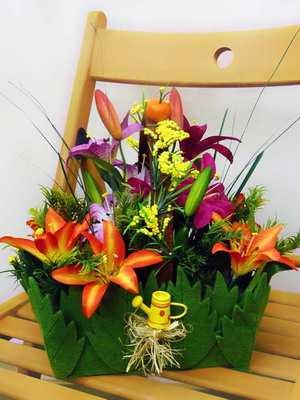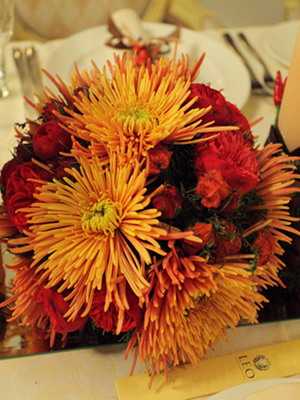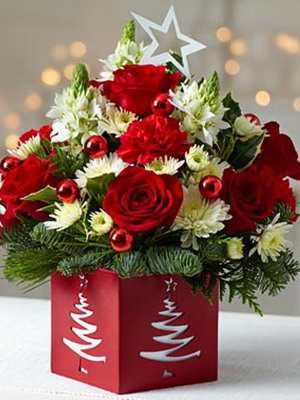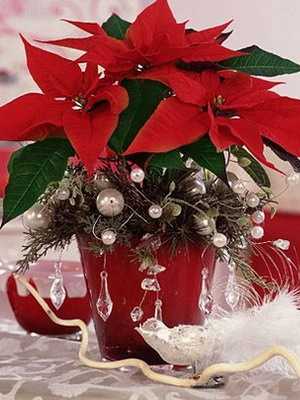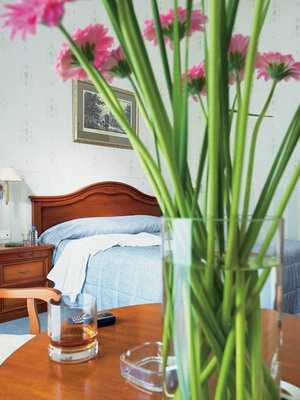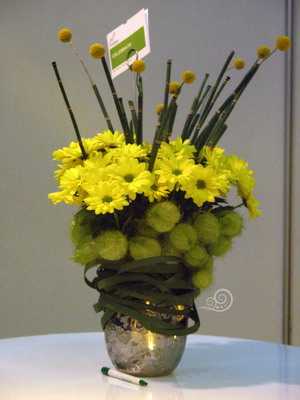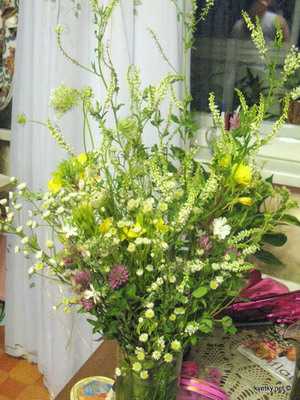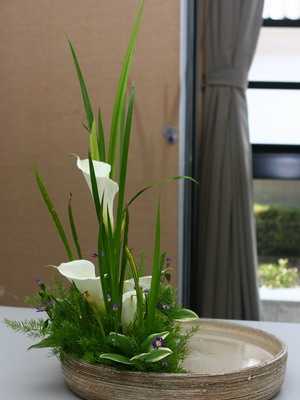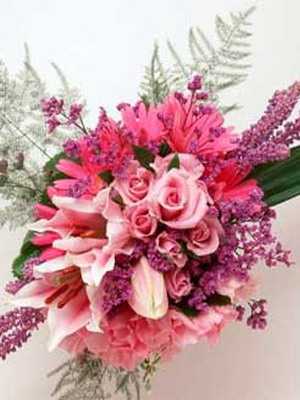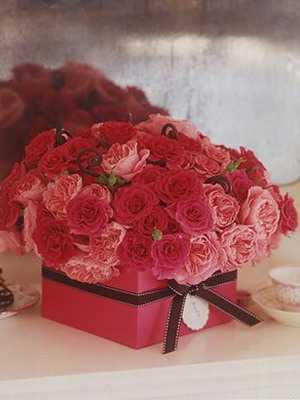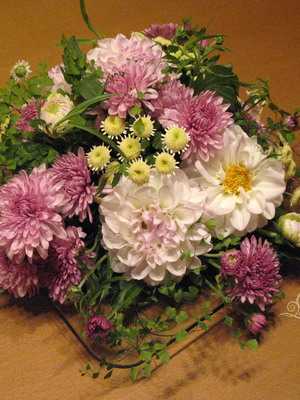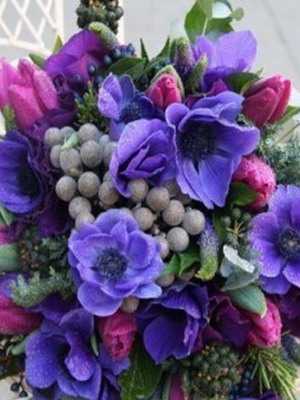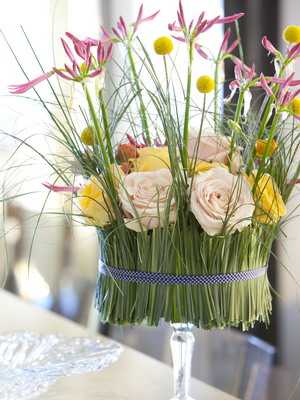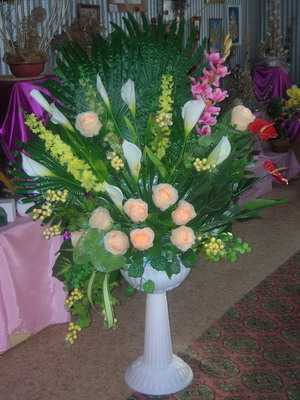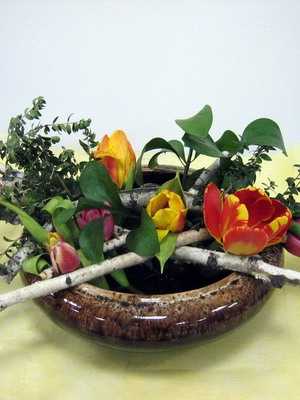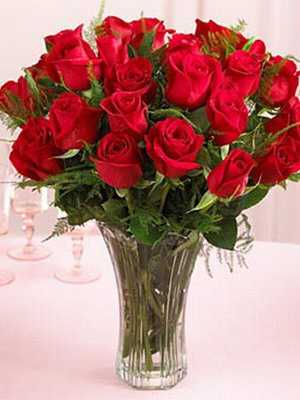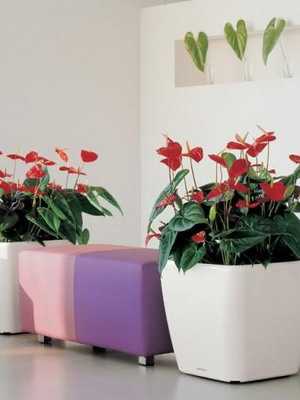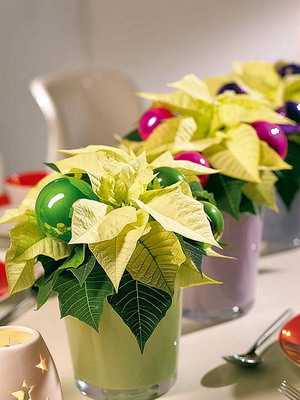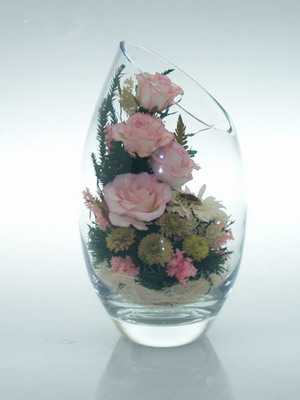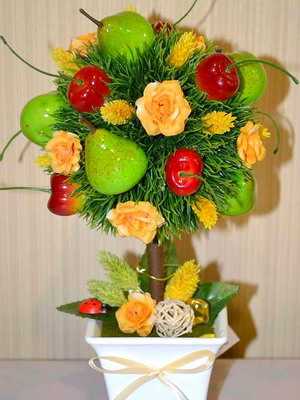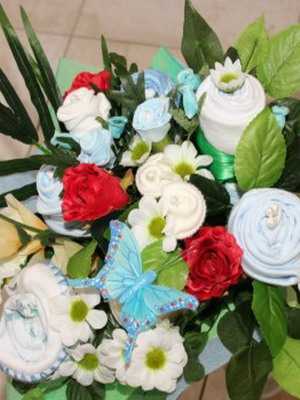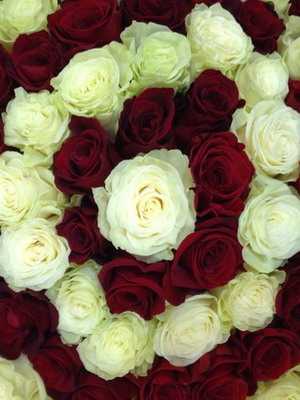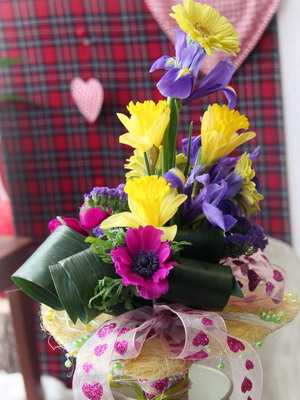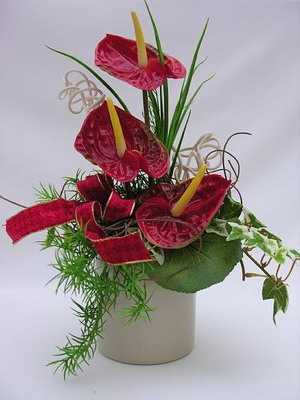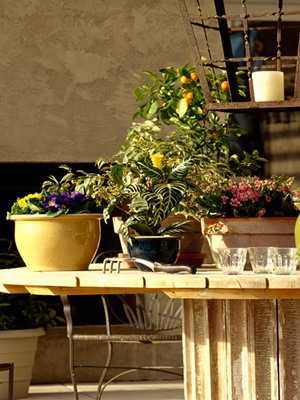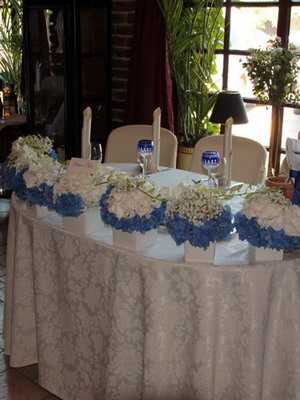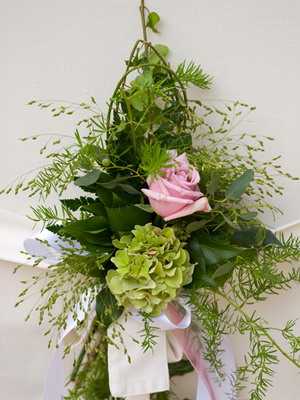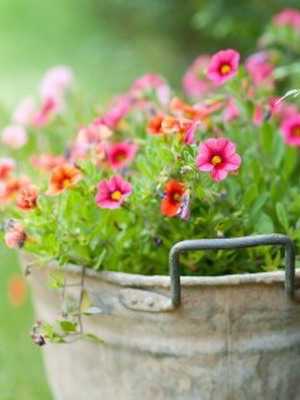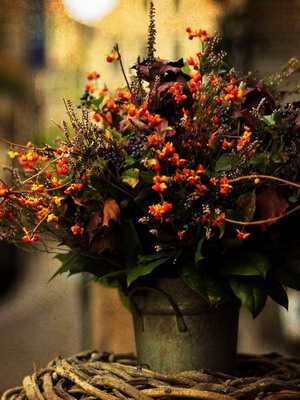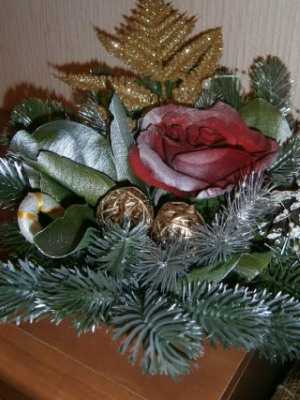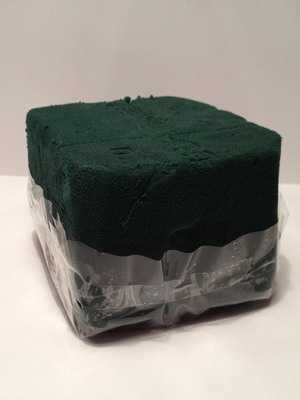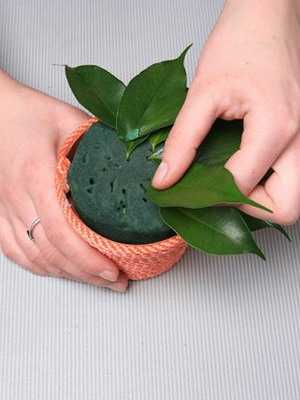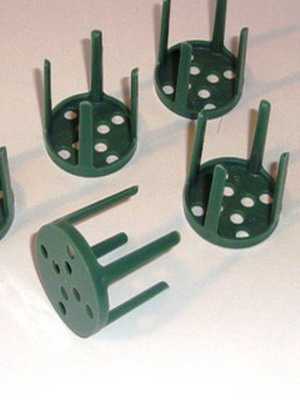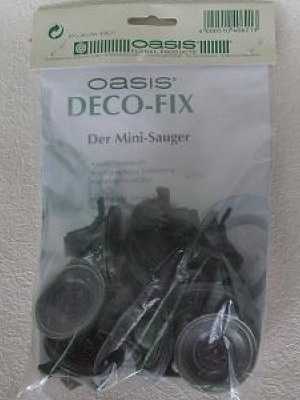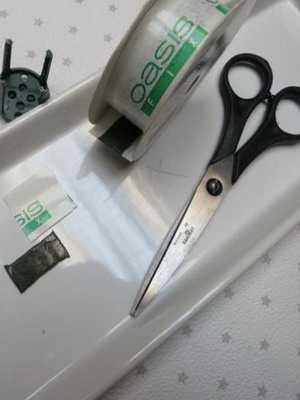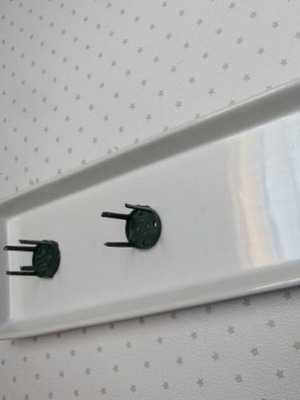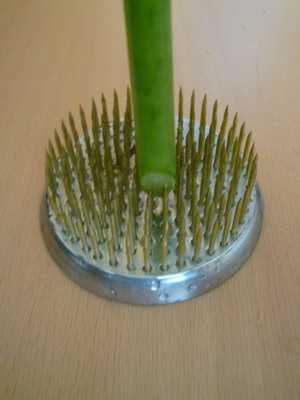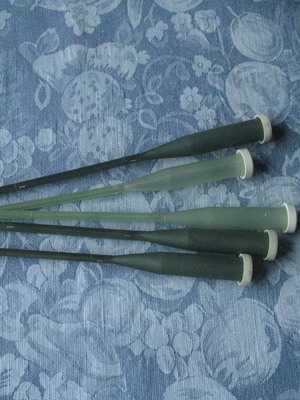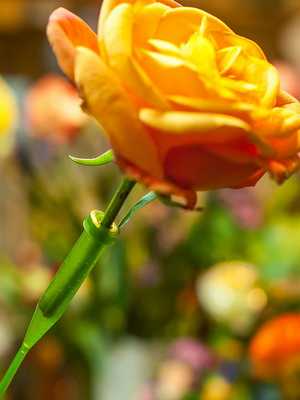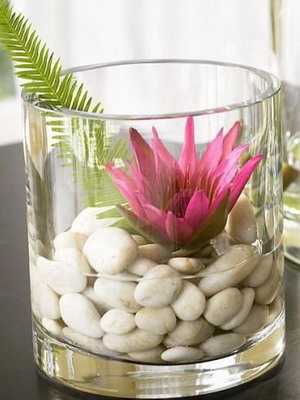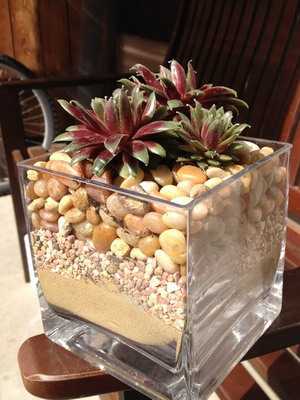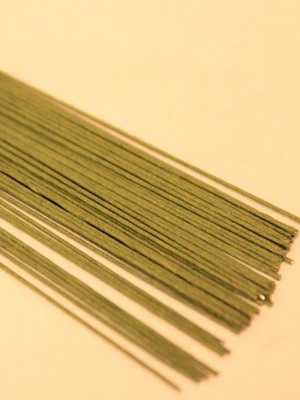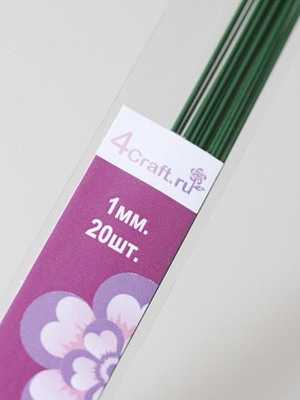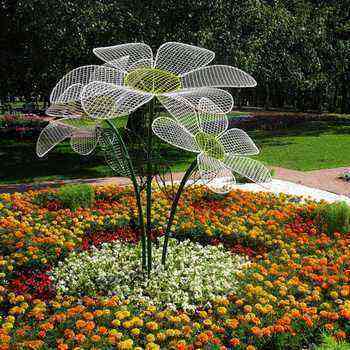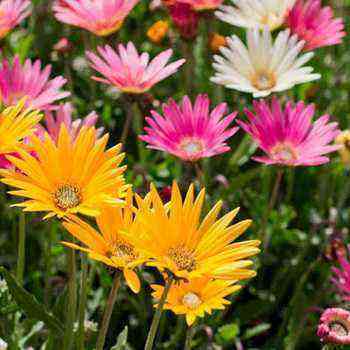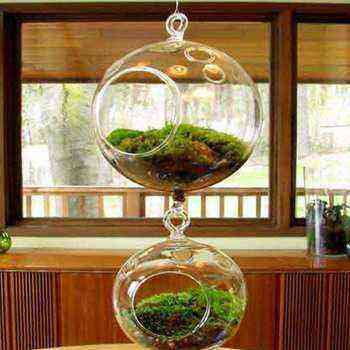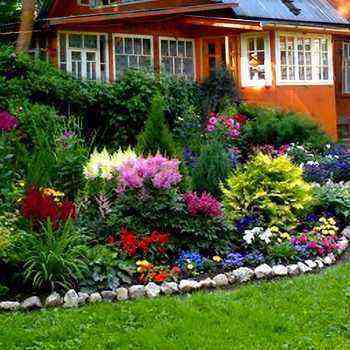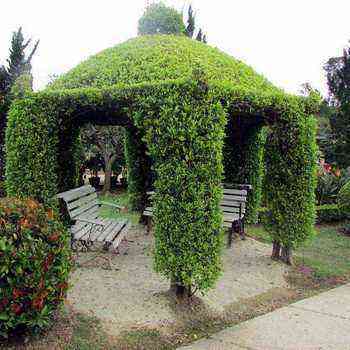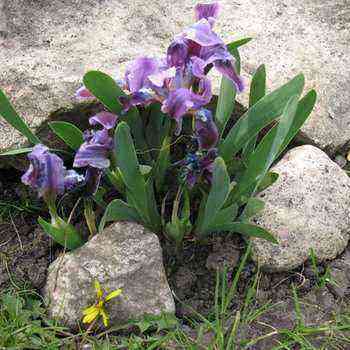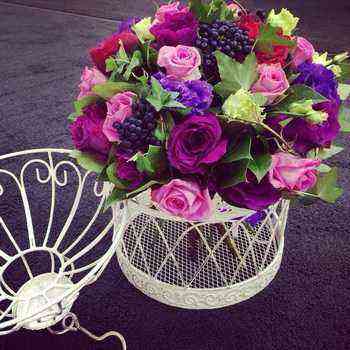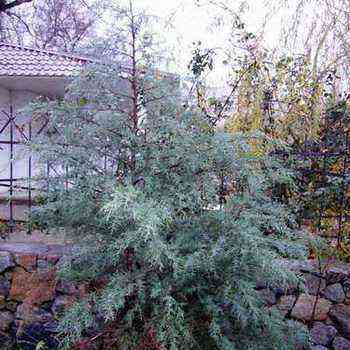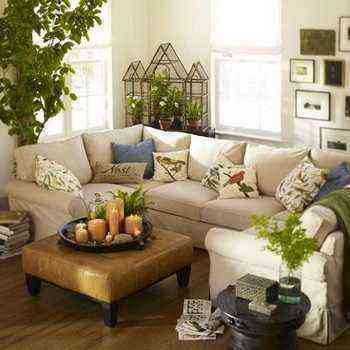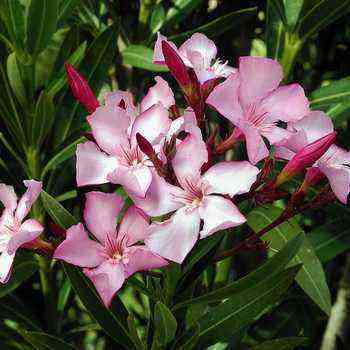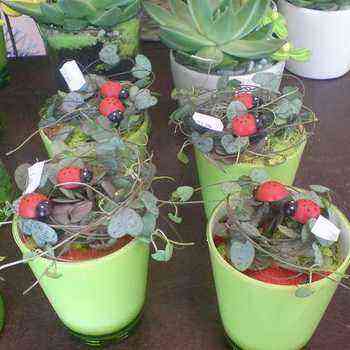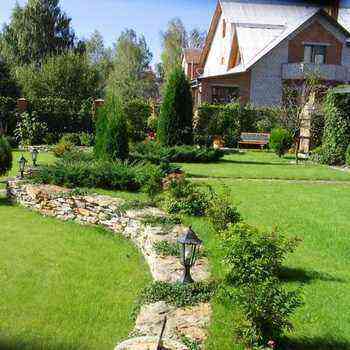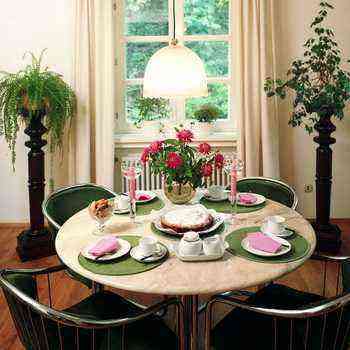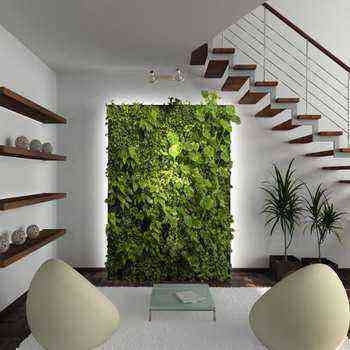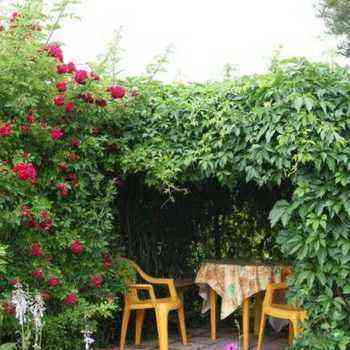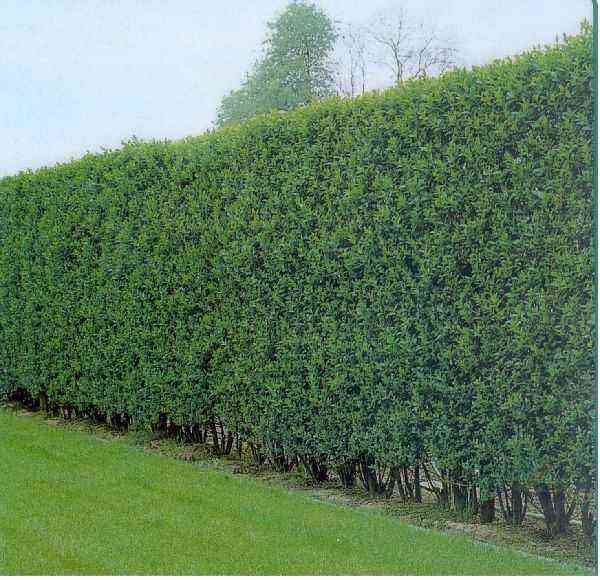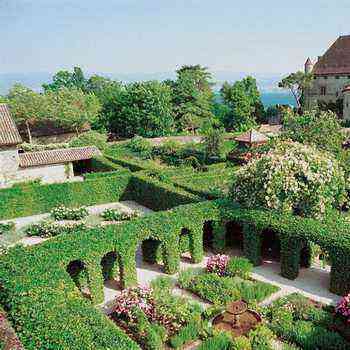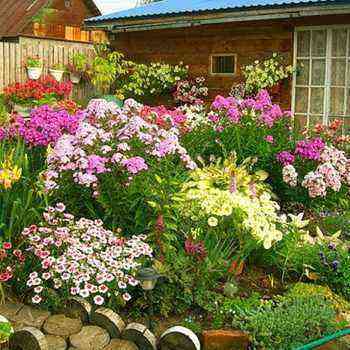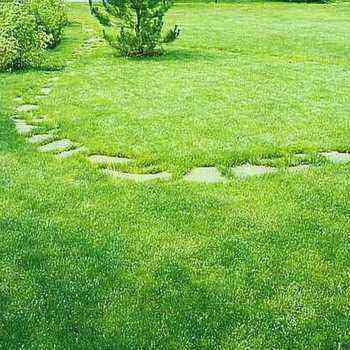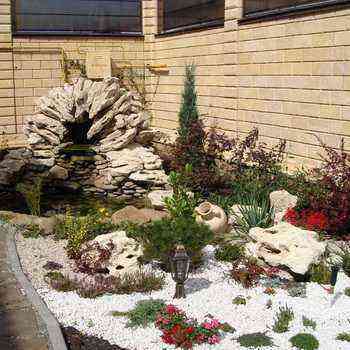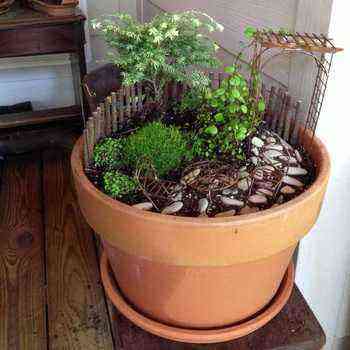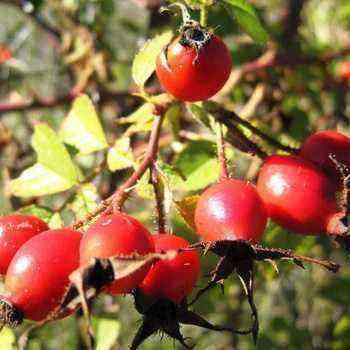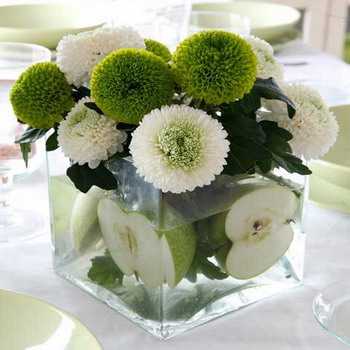
To achieve harmony, it is not necessary to buy any exotic plants. Beautiful flower arrangements for the interior can be created using the most common violets, balsams and other familiar “friends of the windowsill”. Before you make a flower arrangement – look around, you are surrounded by a wide variety of objects that can become part of a flower arrangement.
Harmony is a design term used to describe an object in which individual parts merge to create an appealing whole. To achieve harmony, all or nearly all of the basic traits of good design must be present – variety of textures, proportional components, a sense of movement, and proper use of color. All these design requirements relate to the beauty of the arrangement of a composition of fresh flowers in a container. However, in our case, we must also consider the background, since one of the main goals of the arrangement is to improve the overall decor of the room, and not just decorate it. In this section, you will find information about all these techniques of good flower design, learn how to make arrangements from indoor flowers, and also learn the rules for arranging plants.
There are also additional design requirements. Use a style that suits your skill, creative temperament, display location, etc.
One more fundamental question remains – should you slavishly follow all these rules of shape, color, proportion, etc. in order to be a good flower arranger? After all, most of these principles and elements are common to all forms of artistic creation, but Picasso and Rembrandt could not follow the same rules!
In fact, Picasso studied the rules and styles of classical painting, and he applied them early in his career. His own styles and methods developed later. Apply this principle to your approach to the art of flower arrangement – learn and practice the classic rules of good floral design, and then break them if you are really a beginner Picasso. But do it with the knowledge that you are breaking traditional rules and principles that are well known to you, and not just doing it out of ignorance.
Arranging plants according to color
Color is one of the first things that catches the eye when looking at a composition, and therefore some understanding of color is helpful. This does not mean that there are many rules to follow. Some of the so-called rules are questionable, and too much has been written about what goes with what and how to avoid color collisions – “never put pink next to dark crimson” and so on. Color is a matter of personal taste.
The foundation of color theory is the Color Wheel. It consists of numerous pure colors, from which light and dark shades are obtained. There are three main ways to arrange these colors together so that the viewer feels like they match.
The boldest way is to use contrasting colors that are opposite each other through the center of the circle, the calmest way is to use similar colors that are next to each other, and the most subtle way is to use shades of the same color.
If you are arranging flowers for the home and not for a flower show, then you can ignore the color wheel and associated schemes if you like. In this case, it is helpful to have a clear understanding of the properties of warm and cool colors to ensure that the chosen colors are appropriate for the room, lighting, season, container, and arrangement design.
Choosing a color scheme when arranging colors
What are the features of the room? Look at the color of the walls, furniture, etc. – try using one of the primary colors in the plant material you choose. The background is important! The composition of a dark tone will stand out strongly against the background of a light wall, but will be lost against the background of dark oak panels or burgundy curtains. On the other hand, the impression of a composition in light or warm colors against a dark background is enhanced.
How is the room lit? Beware of dark corners. Blue or purple flowers that stood out in sunlight may become invisible in a dimly lit place. At night, the colors depend on the artificial light source. Conventional incandescent bulbs can dim cool colors and add brightness to warm ones, while fluorescent bulbs brighten colder colors and dim warm ones. By candlelight, cold tones darken, and warm ones become yellow.
How to make a flower arrangement taking into account the seasons
When arranging flowers, you should always consider the season. In Japan, the season is very important – in the Western world it is just an additional parameter to consider.
Pay attention to the photo of floral design for spring plants:
Spring is the time for yellow and blue flowers.
In the summer comes the turn of multi-colored combinations.
Autumn calls for the use of browns, oranges, and yellows.
Well, Christmas is a traditional time for white and bright red flowers.
Compositions of indoor flowers in containers

Don’t use equal amounts of different colors in your scheme – let one dominate and be complemented by others. Do not distribute the different colors evenly throughout the composition, otherwise you will end up with a “spotted dog” effect – group some of the colors together. Be careful with pure colors – they tend to dominate. The classic recommendation is to use them in small amounts and rely mainly on midtones and shades. Light shades are easier than dark shades to fit into most schemes because they work well with each other.
Compositions of home flowers in monochrome
A monochrome (one-color) scheme uses different tones and shades of the same color. This is the easiest way to make sure you can convey the mood you want to create – choose red for dramatic effect, yellow for brightness, cyan for calm effect, and so on.
When composing flower arrangements with your own hands, use the widest possible range of the base color, changing shades from pale to dark.
Stems and / or leaves come in midtones and shades of green, brown, or white, so a true monochrome scheme is only available in these shades. Limiting variations in floral interior design means that the physical form of the composition should be more pronounced through the use of a larger assortment of shapes, sizes, textures, etc.
Such compositions of home flowers, composed in monochrome, are usually strict and solemn.
Compositions of flowers for the interior in a similar pattern
A similar scheme uses two, three, or four adjacent colors in the color wheel. This arrangement has some of the tranquil charm of a monochrome scheme, but there is a much wider assortment of plants to choose from. There is no need to stick to pure colors, tones and shades are very important here, which increase the attractiveness of the composition.
A similar scheme can be muted and restrained if it is done in blues and lilacs only, or it can be energizing in deep reds and magenta. Don’t use each color in equal amounts – let one dominate. In this example, yellow tones are suppressed by orange and brown tones.
Compositions of indoor flowers and photo arrangements in a contrasting scheme
In contrasting schemes, the selected colors are located opposite each other on the color wheel. In modern linear arrangements, the goal is often to create maximum effect by coloring the colors.
Look above at the photo of a composition of indoor flowers in a contrasting scheme – pure colors are used here. For example, a blue iris with orange gerberas, a yellow rose with purple lisianthuses, and so on.
Contrasting schemes are always lively, but they shouldn’t be overly bright. The secret is to use light shades of the colors used and create compositions in pastel colors – pink with pale blue, brownish-yellow with lilac, etc. In this case, the contrasting scheme can be muted, just like the analogous one. Another approach is to use light shades of the same color and dark shades of contrast.
In the summertime, flowers are sometimes picked from all corners of the home garden, and then a composition is created that contains a multi-colored mixture covering the entire spectrum. Reds and purples, yellows and blues, oranges and purples – the result can be pleasant, but very often it is not. Firstly, the effect may simply be too bright, and therefore it is generally advisable to use light shades of different colors. Secondly, the effect can be too variegated – avoid using all colors in equal amounts. Let just a few colors dominate the composition, and use others as a discreet addition.
The combination of colors in the composition: balance and dynamics
Physical balance is vital – if the composition is noticeably asymmetrical, it can turn over. Structures must always be securely fastened and the container must be heavy enough to support the weight of the plant material. Add sand, gravel, etc. as needed.
The visual balance of color combinations in a composition requires the structure to appear stable, even if it is clearly one-sided. There are various ways to visually increase weight on the lighter side – dark flowers look heavier than light ones, rounded flowers look heavier than tubular ones. There is also a balance of the bottom and top.
Large flowers are placed in the center and close to the bottom of the composition, which gives a sense of good balance – improper placement can make the composition look unbalanced.
Dynamics involves the use of techniques and materials that make the eyes move from one part of the composition to another – this movement is associated with the rhythm present in the design.
Without rhythm (for example, a bouquet of roses in a vase), the arrangement looks static and monotonous. There are various ways to get this kind of movement, and five of them are illustrated on this page.
A different design principle is applied to many linear-massive compositions and arrangements of the free style – domination. This involves the presence of one or more parts on which the eye stops and stays there for a short time – these areas are called focal points. Usually a small group of catchy colors are included for this.
There are other ways to create focal points – fancy container, spectacular foliage, and so on. The golden rule is not to overdo it – no element should dominate enough to distract the eye for a long time from the rest of the composition.
Floral arrangement: proportions, background, texture
The flower arrangement consists of several elements that can be seen – a vessel, plant material and possibly a stand and accessories. Good proportion means that the dimensions of the elements must be in such proportion to create a pleasing effect.
This is especially noticeable in landscape, small and miniature compositions, and the main culprits for imbalances are usually oversized flowers and accessories. But a disproportionate arrangement can be in any style, and the most common reason is a vessel that is not the right size for plant material.
The golden ratio shown in the photo above has long been used as a criterion for ideal proportions.
The composition can be quite proportional, but at the same time it is not at all suitable for the background or the setting in which it is placed. To avoid the problem, there are several aspects to consider. First of all, this is the style of the room – it is obvious that an abstract composition will look out of place in a simple cottage setting. The size of the room is equally important – the miniature composition in large and tall halls can look pathetic.
It is also important to take into account the type of wall surface – see the photo above. There are also practical problems that should not be created, such as dining table compositions that interfere with conversation and hallway arrangements that impede free passage.
Plant material can have all sorts of textures – glossy, velvety, pubescent, dull, thorny, etc. A glossy flower becomes brighter if nearby foliage is matte, and shiny leaves give the composition shine in strong light. The role of different textures is to increase the attractiveness of an arrangement at the expense of variety. This is very important when there is only a slight difference in the color of the flowers and when a small amount of plant material is used in a free style arrangement.
Flower arrangement ideas using improvised equipment
In order to bring to life your ideas of flower compositions, you need to “arm yourself” thoroughly. Don’t be confused by the large number of tools and other equipment illustrated and described on these pages. Only a few (bucket, scissors, knife and watering can) are basic necessities for the beginner – the rest are optional. Keep sharp objects such as scissors and knives out of the reach of children and try to keep all tools together in the box. When arranging flowers, place a large plastic sheet over your work surface.
A bucket of water is a necessary piece of equipment for collecting flowers from the garden and storing them when creating an arrangement. Choose a bucket with side handles, as the standard handle swings freely and can damage the flowers during transport. Don’t use a floristic bucket in the kitchen.
Cut flower preservative in powder or liquid form mainly contains antibacterial agents to prevent mucus and odors from developing in vases of water, and sugar to prolong the life of fresh flowers.
Buy a knife with a sharp blade for all kinds of uses. You will need it for peeling stems, removing leaves, and getting rid of thorns. It is also used to treat the ends of stems – oblique cuts and sometimes vertical splits. There is also a need to cut the floral sponge and remove excess molding material.
A watering can is needed to add water to the container and moisten a floral sponge with a composition of fresh flowers. Buy plastic ones with a long, narrow spout starting at the base of the watering can.
Never try to cut thick and woody stems with regular scissors – use pruning shears instead. You can buy a regular garden pruner, but there are also models with narrow blades made especially for florists.
A hand sprayer capable of producing a fine mist of water droplets helps keep the composition fresh in warm weather. Spray the fog just above the top of the composition. Do this once when the arrangement is complete, and repeat as often as possible daily.
The most common scissors are not suitable for cutting stems – they tend to crush tissue. Choose flower scissors with short blades, one of which is serrated. There may be a groove in the base – use this for cutting thin wire, but not for woody stems.
Use wire to tie tufts of cut flowers together. There are three main types of wire. The thickest one is sold in the form of blanks. The wire for tying roses and other flowers is thinner, and the thinnest is wound on a spool – it is widely used by florists for tying plant material.
Toothpicks are a convenient multifunctional assistant. Use toothpicks to punch a hole in the flower sponge for soft stems or to attach the fruit to the flower sponge. Several toothpicks are sometimes screwed around the base of the candle to secure it in a tabletop arrangement.
Spray paints for finishing flower arrangements can be used at any time of the year, but they are especially relevant at Christmas – arrangements with gold or silver pine cones, berries, leaves and flowers can be seen everywhere. Paints are widely used on vessels, fasteners, stands, etc., as well as on plant material.
Purchase the required hardware. Placing flowers in a vase or jug of water is an ancient way of creating flower arrangements, but almost all modern arrangements need to use materials that hold the leaves and flowers in place within the container. These materials and related aids are known as fasteners. They must be securely fastened and hidden from view. Only a few (floristic sponge, floristic plasticine, arranging mesh and frog clamps) are essential items – the rest are optional.
Floral sponge (also called floristic foam) is a porous plastic invented in 1940. It has become the main method of attaching flowers for home decoration. There are two types – the green “frog” sponge, which is soaked in water and then used for fresh plant material, and the brown or gray sponge, which is used only for dry and artificial compositions. The green sponge comes in various shapes – blocks (“bricks”) and cylinders are the most popular. It is a very light material, but its weight when saturated with water increases more than 30 times. This green sponge should never dry out after soaking.
If you wrap it in foil or plastic wrap after use, it may be suitable for a few more arrangements. The great advantage of the sponge is that the stems can be located at any angle, both in shallow and deep vessels, and the problem of water decay is eliminated. It has few drawbacks – a large composition requires additional support with a wire mesh and some plants (for example, daffodils and tulips) hardly absorb water from it.
Adhesive tape is available in both wide and narrow versions. The wide band is mainly used to secure the floral sponge or wire mesh in the vessel. Narrow bands are sometimes stretched across the top of a shallow, wide-necked vessel in a criss-cross pattern to form a plant-holding net.
Lock – this is the simplest type of sponge attachment. It is a small plastic disc with four vertical prongs – the base is attached to the container using plasticine, and the block or cylinder of the floral sponge is pushed onto the prongs. If a large floral sponge block is used, more than one retainer may be required.
Floristic plasticine – a non-hardening sticky substance in the form of a tape that holds dry surfaces together. It is widely used for fixing a frog, tattoo or candle holder in a container and comes in brown and green. Ordinary plasticine can be used as a substitute.
Stitching (also known as kenzan) is needed to support a handmade flower arrangement in the shape you want. Many sharp pins are held firmly in a solid base, which can be round or rectangular. Its main advantage is that it will securely hold thick and heavy stems. Tattoos can be used on their own in a shallow bowl or in conjunction with other mounts for a large composition in a deep container. Choose a model with a heavy base and lots of sharp copper pins. The disadvantage of this mount is that it is expensive. If you can only afford one, choose a 8 cm round one. Attach it to the base of the container using floral clay. The tattoo can be built into the bottom of a metal bowl that retains water. In this case, there is no need for an additional vessel.
Floristic test tubes (also called flower extensions) are miniature vases that are used in large flower arrangements where the leaves and flowers must be placed higher than their stem height allows. They are usually about 30 cm long and have a pointed end, usually attached to a stick, which is then stuck into a floral sponge or wire mesh. Fill the tube with water before inserting the stems.
Small pebbles, round and flattened glass beads have long been used to hold cut flower stems. With this arrangement of the stems, there will be slight mobility in the arrangement.
Arranging grid (another name: wire mesh, loop wire) may also be needed when composing a composition of indoor flowers. Buy a thin mesh with 5 cm meshes. Cut a hard edge, roll up into a tube, crumple into a ball and place in a container. Wire mesh is the preferred fastening method for arrangements with many tall or heavy stems. A 3cm mesh is often used to cover a floral sponge block if a large composition is planned. Some specialists prefer a galvanized mesh with a plastic coating. Be careful not to scratch the sides of the valuable vessel with it. Wash and dry the mesh after use – it can be reused.
